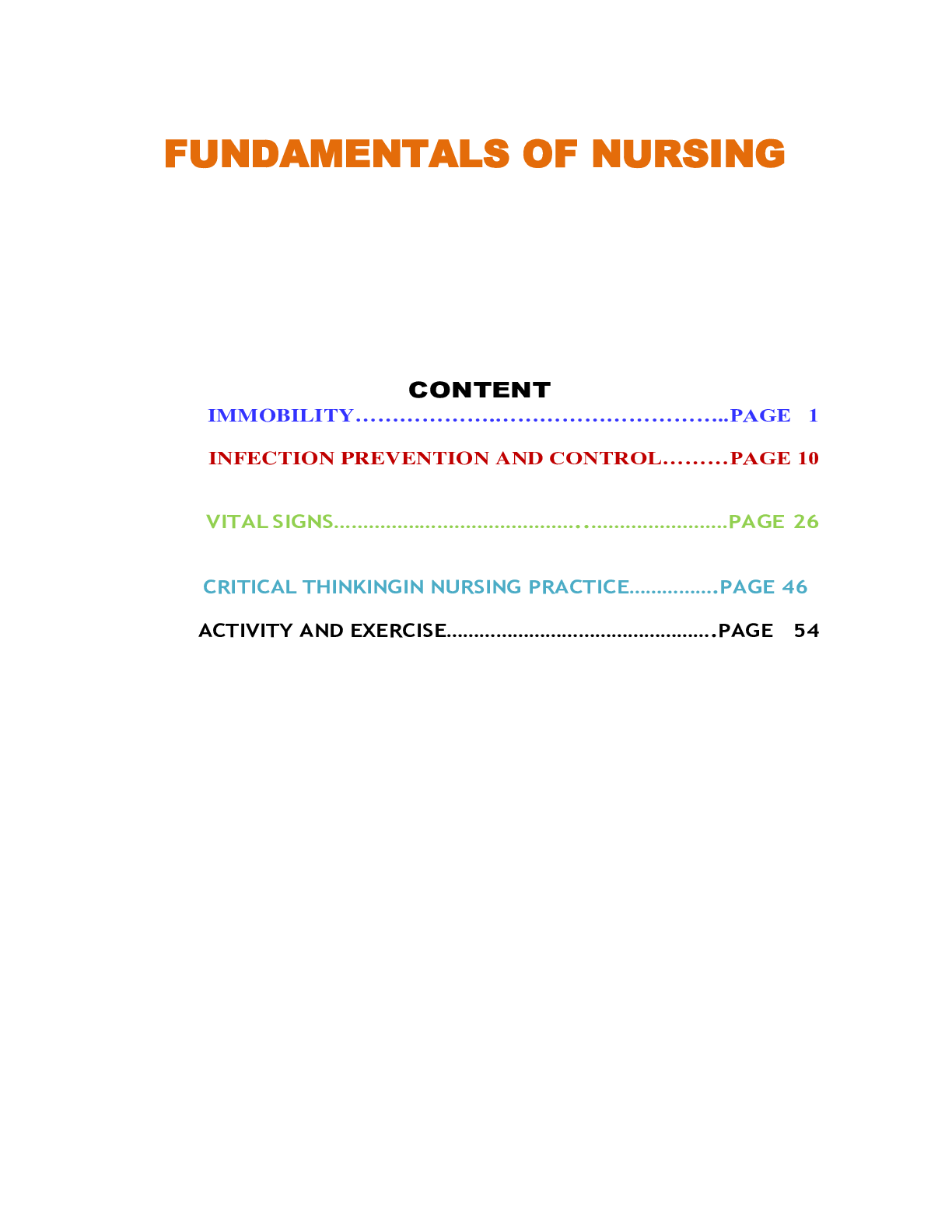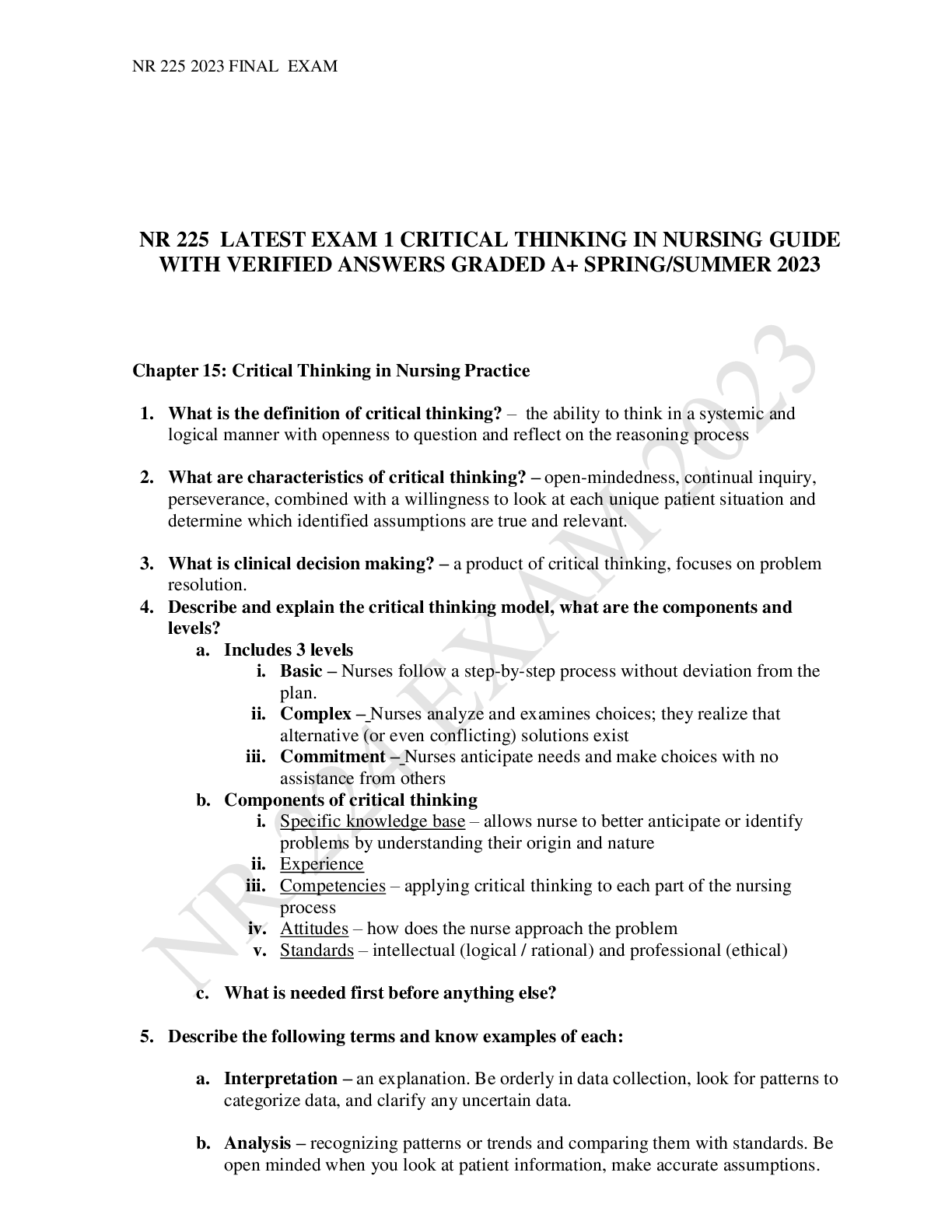*NURSING > EXAM > NUR 321 VCE # 1 Lesson 3- Critical Thinking in Nursing Practice | Patient: Patricia Newman, Medical- (All)
NUR 321 VCE # 1 Lesson 3- Critical Thinking in Nursing Practice | Patient: Patricia Newman, Medical-Surgical Floor, Room 406 (solved)
Document Content and Description Below
VCE 1: Lesson 3: Critical Thinking in Nursing Practice Reading Assignment in Potter, P., Perry, A., Stockert, P., & Hall, A. (2013). Fundamentals of nursing (8th ed.). St. Louis, MO: Elsevier Mosby. �... �� Nursing Assessment (Chapter 16) • Nursing Diagnosis (Chapter 17) • Planning for Nursing Care ( Chapter 18) • Implementing Nursing Care (Chapter 19) • Evaluation (Chapter 20) • Documentation and Informatics (Chapter 26, pages 357-358) Patient: Patricia Newman, Medical-Surgical Floor, Room 406 Objectives: • Assess the health care needs of two patients. • Develop nursing diagnoses from available data. • Identify priorities of nursing care for two patients. • Develop goals and outcome statements. • Discuss factors to consider in choosing nursing interventions. Exercise 1 Writing This exercise will take approximately 30 minutes to complete. 1. A nurse is preparing to start her shift on a medical-surgical unit. Which of the following factors concerning the change-of-shift report (hand-off report) will be most important for the nurse to consider? (Hint: See pages 357-358 in your textbook.) a. Next anticipated dressing change b. Patient's personality c. Patient's family support d. Off-going nurse's opinion about the patient's family background 2. Indicate whether the following statement is true or false. Physiologic diagnoses have a higher priority than psychologic diagnoses. 3. Indicate whether the following statement is true or false. The Kardex provides a filing system for recording the physician's orders. 4. The statement that outlines the desired change in the patient's condition or behavior is termed the . (Hint: See page 238 in your textbook.) 5. You are assigned to provide care to a patient who has recently had abdominal surgery. When you are updating the nursing care plan, which of the following patient outcomes would be appropriate to include? Select all that apply. a. The nurse will observe the patient's understanding of use of the incentive spirometer. b. The patient will demonstrate an increased level of comfort. c. The patient will initiate turning and deep breathing within 2 hours. d. The patient will be more comfortable. e. The patient will report lessened pain using the pain scale within 3 hours. 6. A review of the care planned for a patient during a given shift reveals the interventions listed below. Which of these interventions is classified as an independent nursing intervention? Select all that apply. a. Anchor an indwelling Foley catheter. b. Discontinue IV. c. Refer the patient for home health care. d. Review complications to report after discharge. e. Record intake and output. 7. The nurse is assisting a newly graduated nurse in completing a care plan. Which of the nursing interventions planned by the graduate and listed below indicate the need for further instruction? Select all that apply. a. Push fluids. b. Monitor blood pressure. c. Monitor blood pressure every 4 hours. d. Call physician for elevated temperature. e. Assist patient to turn, cough, and deep-breathe every 2 hours. 8. A (n) (A.) (B.) is a preprinted form with orders for routine therapies, monitoring guidelines, and/or diagnostic procedures for specific patients with identified clinical problems. 9. A patient has become disabled as a result of an automobile accident. The case manager has documented concerns about the patient's ability to perform instrumental activities of daily living. Based on your knowledge, what activities are included in this listing? Activity and exercise management could include bathing, dressing, preparing food and drink for consumption, ambulating, shopping, house cleaning, writing checks, or taking medications. Exercise 2 Online This exercise will take approximately 45 minutes to complete. Sign in to work at Pacific View Regional Hospital on the Medical-Surgical Floor for Period of Care 1. (Note: If you are already in the virtual hospital from a previous exercise, click on Leave the Floor and then on Restart the Program to get to the sign- in window.) From the Patient List, select Patricia Newman (Room 406). • Click on Get Report. • Click on Go to Nurses' Station. • Click on Chart and select the chart for Room 406. • Click on and review the Nursing Admission and History and Physical. 10. What is Patricia Newman's chief complaint at the time of admission? 11. According to Patricia Newman's past medical history, she has a history of several medical disorders. Listed below are her primary medical diagnoses. Prioritize these disorders in order of importance for this hospital admission (1 through 5 with 1 being the most important). A. Tobacco use B. Emphysema C. Pneumonia D. Osteoporosis E. Hypertension 12. During the nursing admission, Patricia Newman described her health as "not very good." This is an example of: a. objective data. b. back channeling. c. defining characteristics d. subjective data. Click on Return to Nurses' Station. Click on 406 at the bottom of the screen. Review the Initial Observations. 13. Based on your knowledge of Patricia Newman's condition and review of the Initial Observations, which of the following tasks should the nurse perform first after entering the room? a. Assess patient's vital signs. b. Check patient's armband for identification. c. Assess patient's neurologic status. d. Determine patient's chief concern at this time. Click on Patient Care and then on Nurse-Client Interactions. Select and view the video titled 0730: Prioritizing Interventions. (Note: Check the virtual clock to see whether enough time has elapsed. You can use the fast- forward feature to advance the time by 2-minute intervals if the video is not yet available. Then click again on Patient Care and on Nurse-Client Interactions to refresh the screen.) 14. Critique the nurse-patient interaction in the video. What strengths does the nurse display in her interaction with Patricia Newman? 15. What action should the nurse take after receiving report? a. Discuss the plan of care for the day with the patient. b. Validate patient's pulmonary status by conducting a physical examination. c. Begin instruction on breathing exercises. d. Call the physician to review data from the report. 16. After gathering data from the physical assessment to further define potential problem areas, the following issues are identified. Prioritize the potential problems in order of importance (1 through 4 with 1 being the most important). Nutritional intake Oxygenation Health promotion habits Reduced energy level 17. As you identify clusters of data, you begin to recognize patterns or trends. Data often contain defining characteristics, or criteria, for nursing diagnoses. Listed below are three nursing diagnoses with defining characteristics. Which of the diagnoses would likely apply to Patricia Newman? Select all that apply. a. Ineffective Airway Clearance: Diminished breath sounds, dyspnea, adventitious breath sounds, ineffective cough, sputum production, changes in respiratory rate b. Impaired Gas Exchange: Tachycardia, hypoxia, abnormal arterial blood gases, abnormal rate and depth of breathing, hypoxemia c. Ineffective Breathing Pattern: Pursed-lip breathing, dyspnea, use of accessory muscles to breathe, respiratory rate higher than 24 per minute, altered chest excursion Click on Chart and then on 406. Click on and review the Physician's Orders, Physician's Notes, and Consultations. 18. A series of interventions are indicated to assist Patricia Newman in managing her impaired gas exchange problems. Match each intervention with its correct type. (Hint: Refer to your textbook if you need help identifying types of interventions.) Type of Intervention: 1. Nurse-initiated 2. Physician-initiated 3. Collaborative Instruct patient on how to perform pursed-lip breathing. Administer oxygen at 2 L per nasal cannula. Administer bronchodilator by a metered-dose inhaler (MDI). Have the patient perform cascade coughing every 1-hour. Fluid restriction of 1 L per day 19. A nurse caring for Patricia Newman performs the following activities. Which of these activities are examples of indirect care measures? Select all that apply. a. Adjusts the oxygen flow meter to ensure that it runs correctly and checks condition of the tubing b. Coaches Patricia Newman on the technique for performing a cascade cough c. Documents the character of Patricia Newman's cough and ability to expectorate mucus d. Consults with the respiratory therapist about Patricia Newman's use of an MDI e. Administers intravenous (IV) fluid infusion 20. For each of the expected outcomes listed below, write an evaluation measure. a. Patient's lungs will clear without crackles within 48 hours: b. Patient's fluid intake will be 3 L every 24 hours: c. Patient will perform pursed-lip breathing correctly within 24 hours: d. Patient will experience less dyspnea while ambulating within 2 days: [Show More]
Last updated: 2 years ago
Preview 1 out of 7 pages
.png)
Buy this document to get the full access instantly
Instant Download Access after purchase
Buy NowInstant download
We Accept:

Reviews( 0 )
$16.00
Can't find what you want? Try our AI powered Search
Document information
Connected school, study & course
About the document
Uploaded On
Jun 19, 2021
Number of pages
7
Written in
Additional information
This document has been written for:
Uploaded
Jun 19, 2021
Downloads
0
Views
126


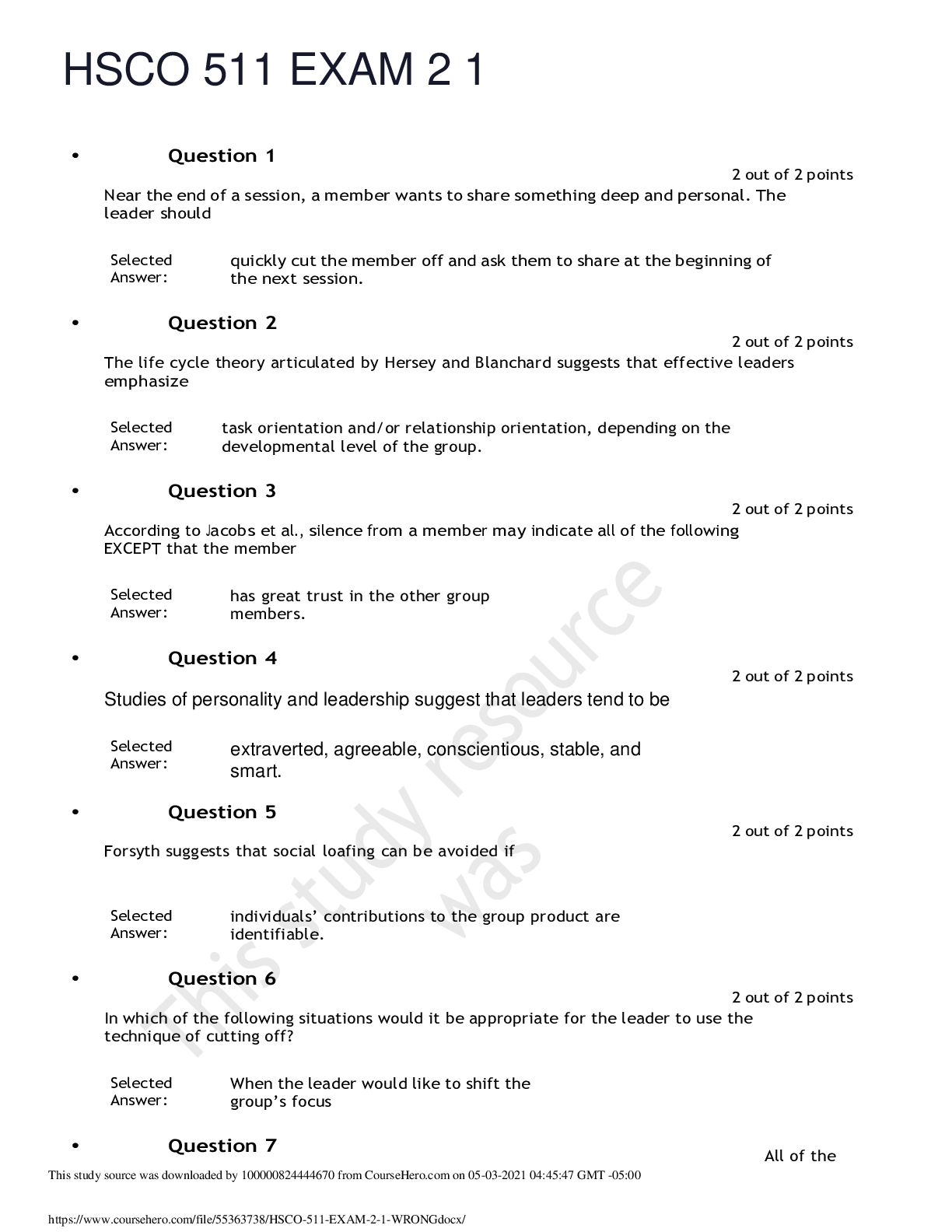


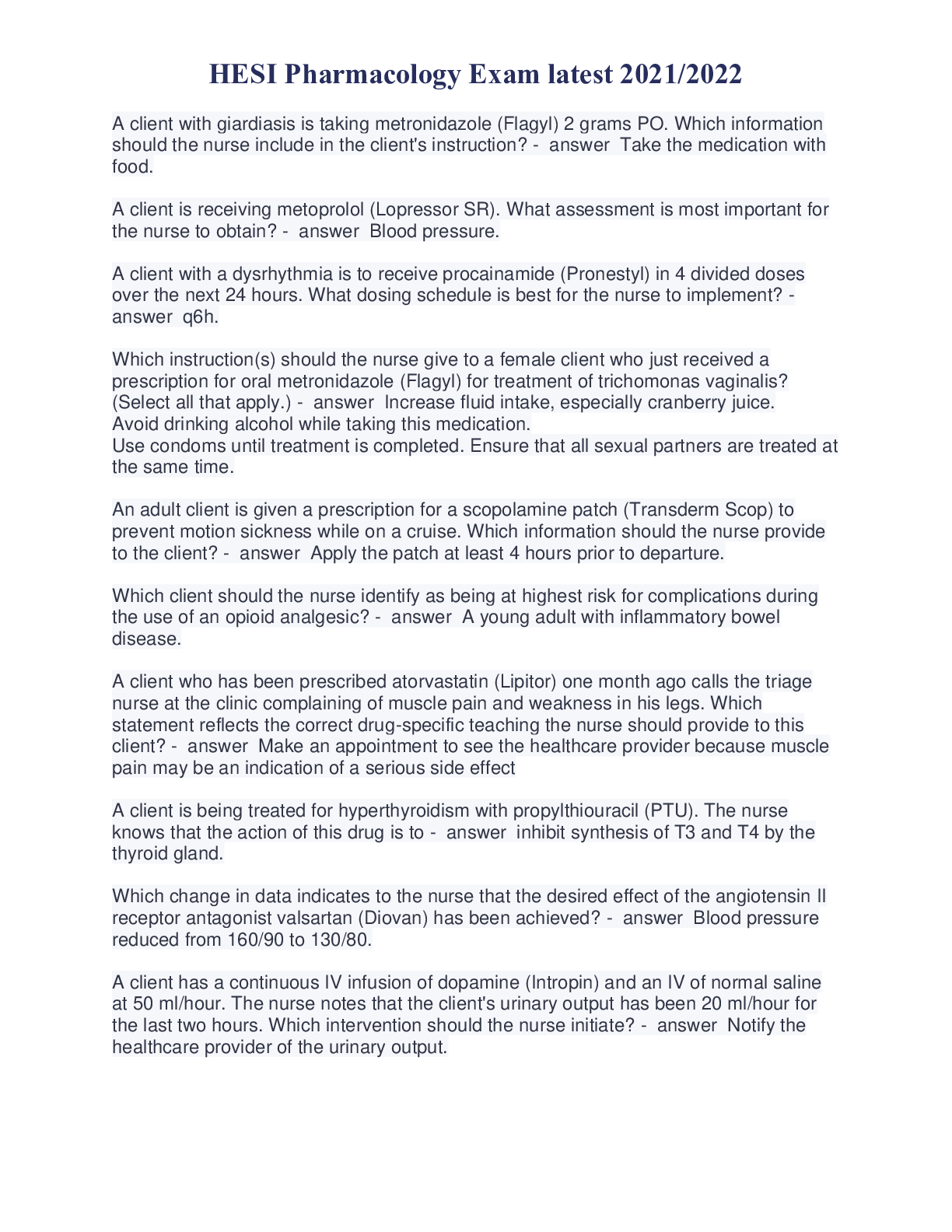
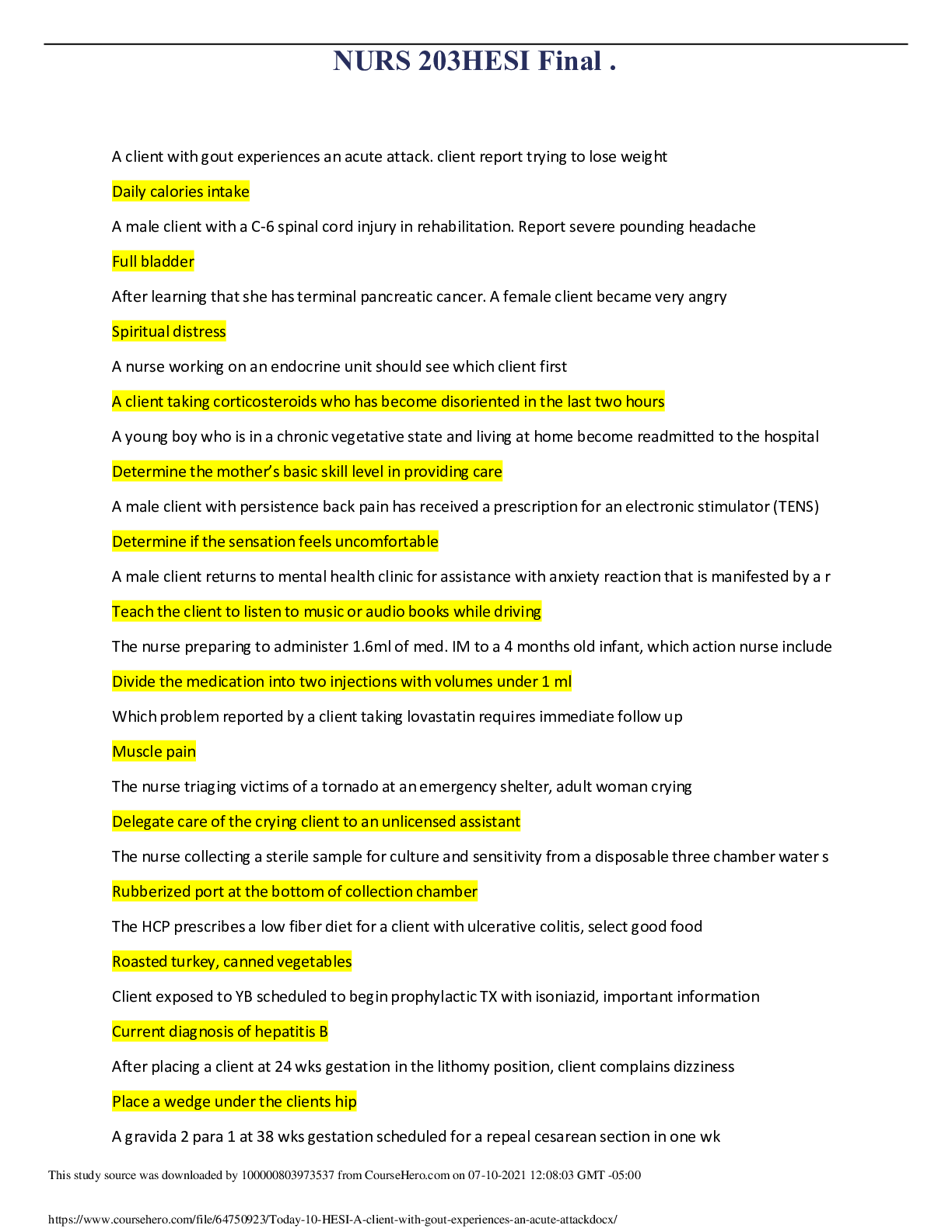



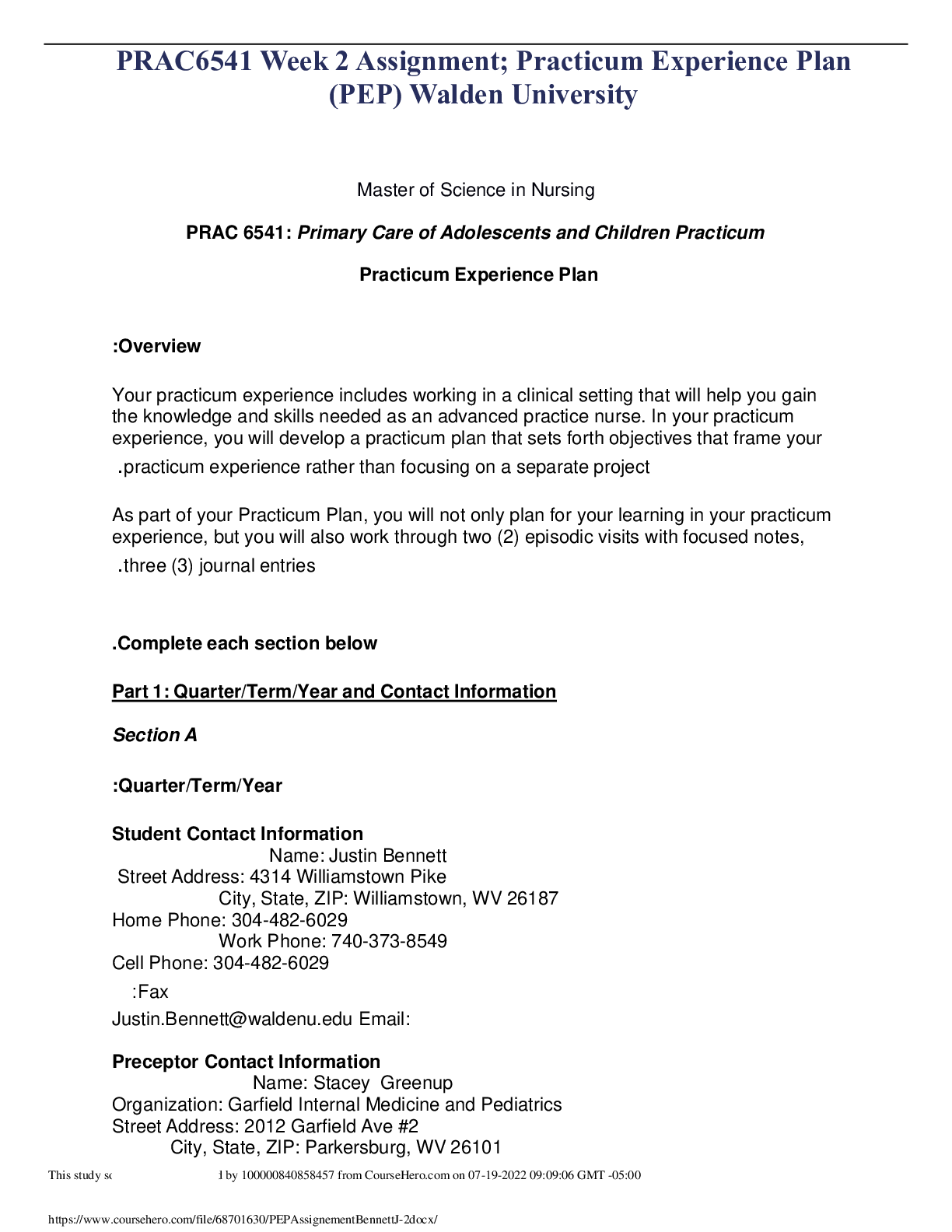
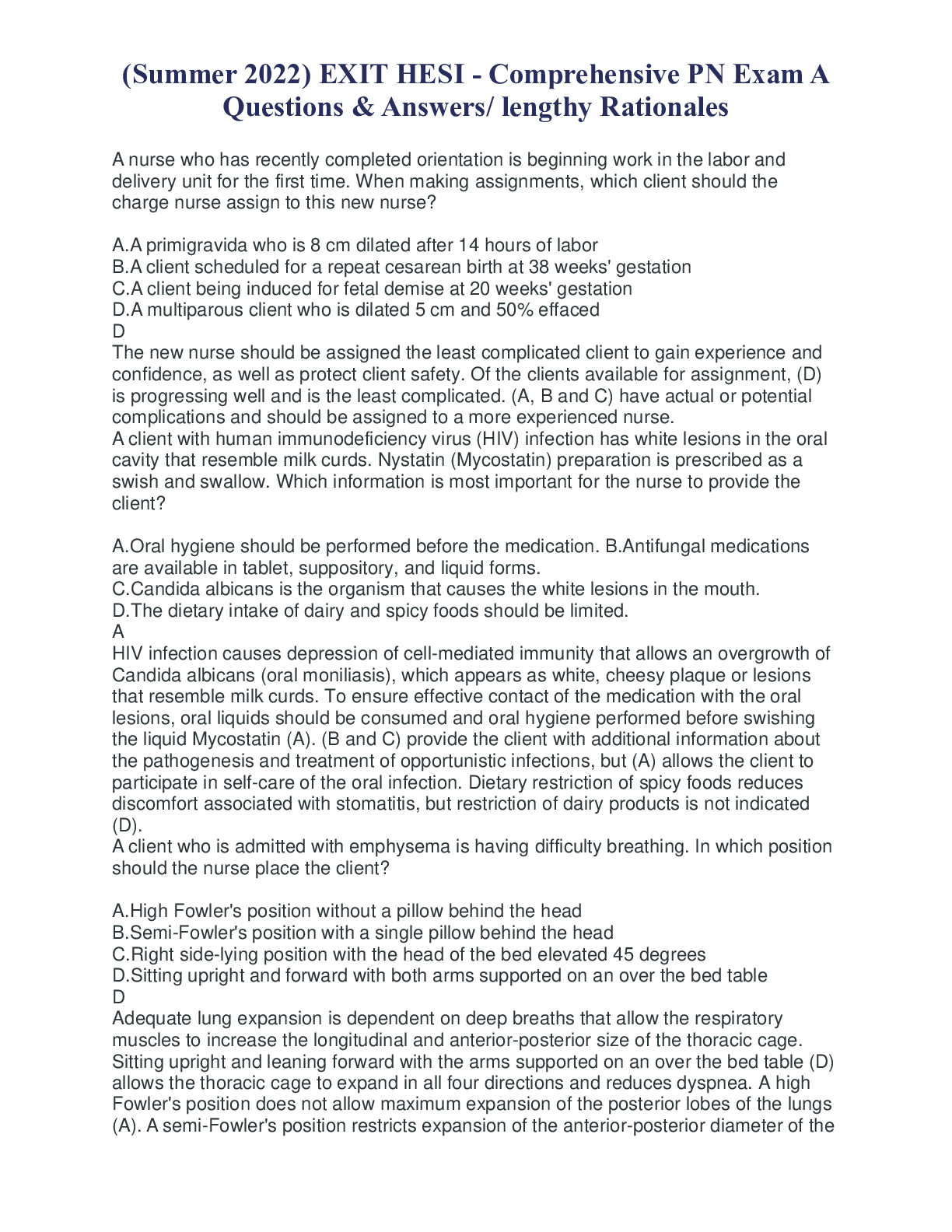
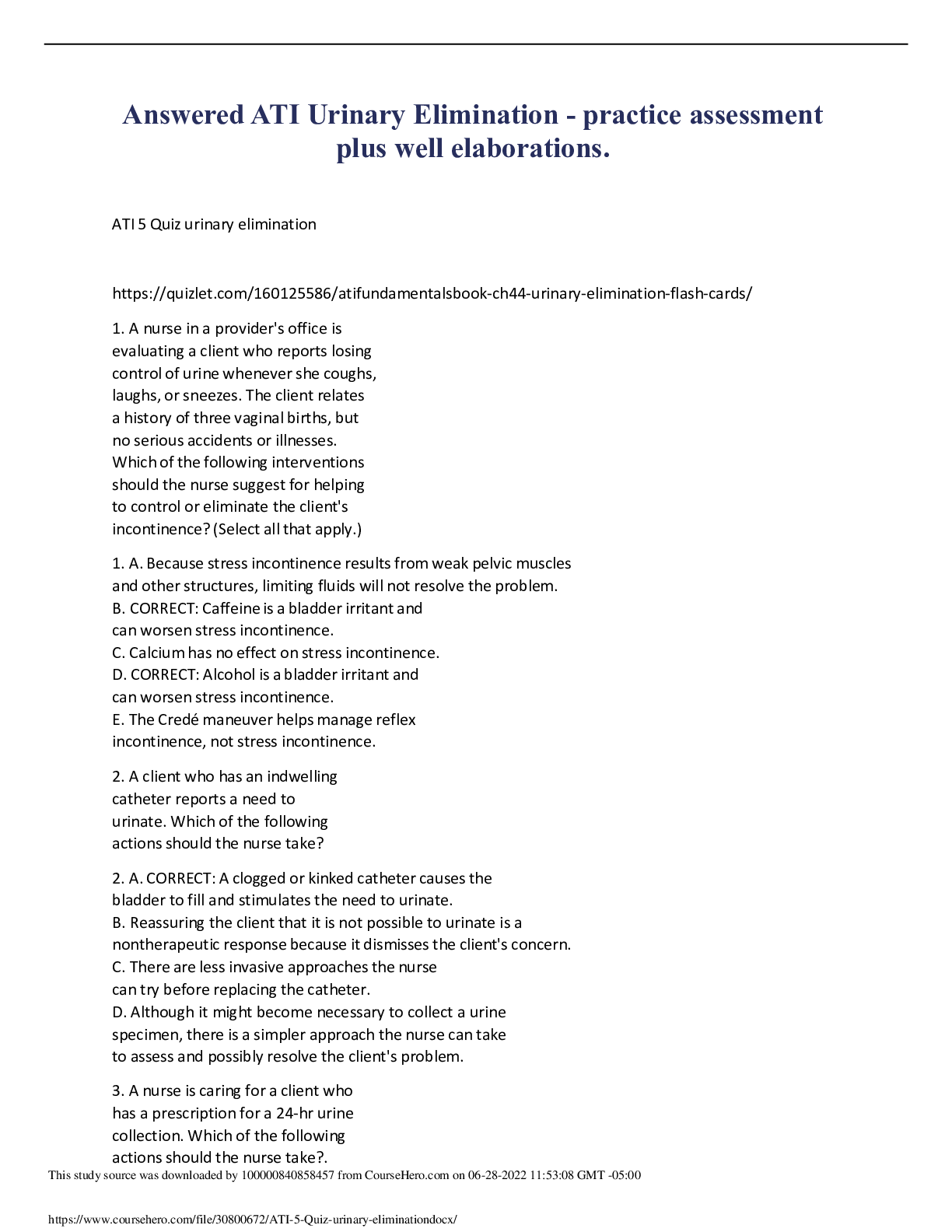

 (1).png)




